Part 1
I just got back from my first decent trip in two years. For someone whose habit is to take off for several weeks every couple of months, I believe you’ll agree — I had quite a deficit to repair. A few years ago a saucy friend of mine said he thought I came home only long enough to do my laundry.
I’m rather surprised I survived the Covid the travel-drought at all. How long can you survive without oxygen…or blood? I heard someone the other day making a persuasive case that the whole world is suffering from PTSD. It’s worth considering.
Still, we must pull ourselves together. It’s not healthy belaboring one’s perceived deprivation, especially since things are improving for the aspiring traveller. Within a week of the U.S. border opening, I was on my way to (ready for this?)— coastal Washington State! You seldom hear Washington described as exotic, but you’ve got to start somewhere, and I was as excited as if I were heading to some mythical utopia, perhaps in the Himalayas, somewhere east of Bhutan.
Now it’s true that coastal Washington has its charms when the weather is decent, but to any rational person, going there in late November is nuts— it’s sure to be dark, dreary, wet and cold. This is indeed the “off-season”.
The term “off season” has always given me a strange feeling, something like a chill— combined with a shot of adrenaline. Because I like oddity, I figure one’s experience of a place in the off-season is apt to be a good deal more stimulating than visiting when it’s crowded with gawkers eating ice cream cones.
Think for a moment of you and me walking through a dilapidated amusement park at midnight at the end of November. It’s starting to rain. We walk past the Merry-Go-Round… the Scrambler…the Tilt-A-Whirl…the Duck-Hunt Shooting Gallery… the cotton-candy booth… the Ferris wheel. Our flashlight suddenly flickers, then quits altogether. Dead leaves and litter swirl by on a bitter wind… oh, it’s cold!
Let’s get out of the chill…let’s just step into the House of Mirrors for a minute. After you.
Do you see what I mean?
But never mind the dark, cold and damp of a Washington November. Because it was my first trip in so long, I really didn’t care what the trip itself turned out to be, I was just glad beyond measure to be rolling—open to fresh experiences of whatever kind. When I set out, neither the
destination nor the route mattered a bit. Good gracious, I was moving again! I felt my blood stirring in a very agreeable way. I felt my whole being awaken, as after a long spell in a medically-induced coma.
In my mind, this trip might be like John Steinbeck’s Travels With Charley, which, by the way, is one of my favourite books—very, very dear to me. The book details Steinbeck’s fascinating 1960 trip around America in the company of his eccentric French poodle, Charley. They travelled in a custom-built GMC truck camper Steinbeck dubbed Rocinante, after Don Quixote’s horse. To my great joy I actually saw Rocinante at the National Steinbeck Center in Salinas, California a few years ago. It’s really lovely — nostalgia on wheels— but by modern standards almost primitive—but boy, what a thrill it gave this foolish old heart.
As for me, my rig was a 22 year-old, 25-foot-long Ford E350 Class C motorhome, entirely white, with no identifying markings. I am told it resembles an immense toaster on wheels; my friend Paul calls it LaTostadora. I like it better than my own house.The name of this rare beauty is Bright Hope, borrowed from one of my favorite hymns, Great is Thy Faithfulness.
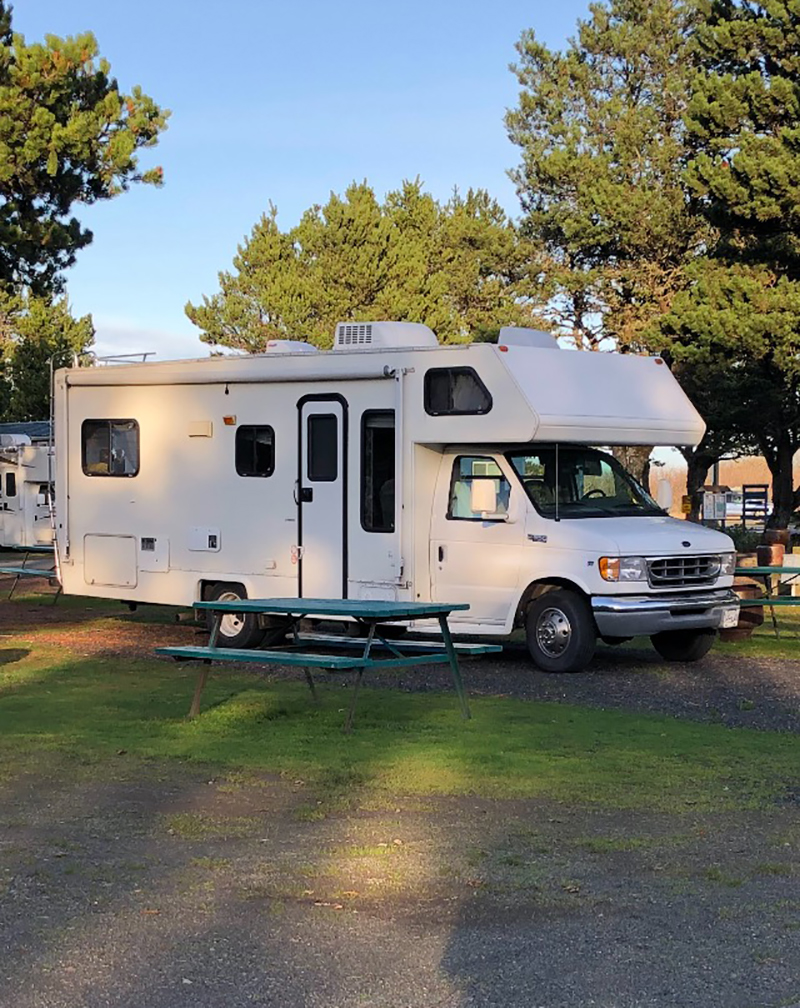
My companion on the road was the sweetest dog currently living on planet Earth, my eight year-old Australian Shepherd, Rosie. She is rust-colored, with sympathetic amber eyes and a ready smile. I usually call her “Rose”, but when I have something serious to convey she’s Rosamunda, Latin for something like “pure rose” , or “rose of the world.” She’s my “Red Ragbag”. Dog-lovers will understand.
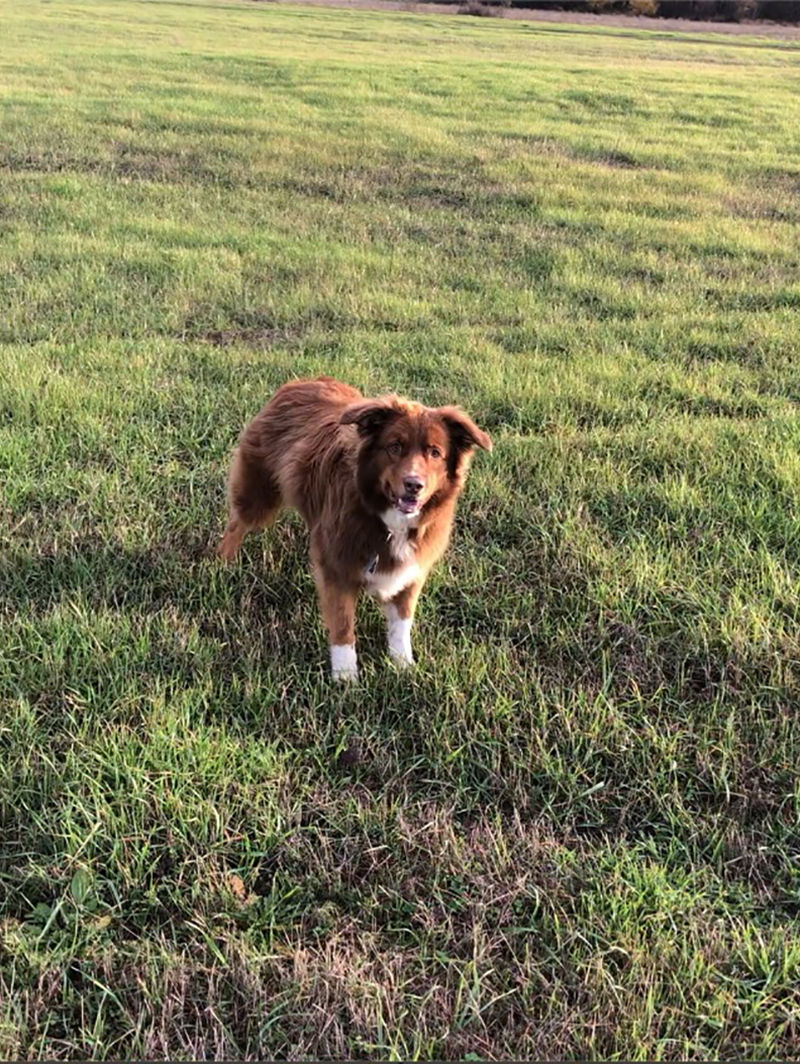
So as not to be too tedious with this account, I’d like to relate certain experiences that stand out in my mind, as well as some topics that arose which I found worth pondering, as we rolled along. The latter may seem random tangents; I guess they are, but that’s how my mind runs. It used to drive my teachers crazy.
Concerning border formalities, I took great pains over the Public Health requirements. Still, I was a bit nervous; there were news items describing huge fines for would-be border-crossers who lacked one petty qualification or another.
Rose and I took the antique but shipshape MV Coho from Victoria, British Columbia to Port Angeles, Washington, a voyage of 90 minutes. Rose stayed in the rig.The ocean swell was exhilarating; I wove my way uncertainly around the deck, bow to stern, and then back again.
After several laps, I figured it was time to fortify myself for the upcoming drive. Accordingly, I went to the cafeteria and ordered a bowl of Ivar’s clam chowder and a basket of brown things called “potato wedges.”
I asked the attendant, “Those wedges hot?” They didn’t look it. I bet they’d been sitting undisturbed since the previous night’s arrival, 14 hours earlier. He furrowed his brow— never an auspicious sign— and replied, “Not too sure….how about I give you two baskets for the price of one?” I nodded eagerly; what the heck— why not? I was starting to get into the swing of things, and I’m always up for a good deal.
The wedges, sad to say, were served at precisely ambient temperature. So I proceeded to douse them with plenty of ketchup, hand-pumped from an enormous red vat with”Heinz” on it, and popped them into a nearby microwave. I figured sixty seconds would do it. Without further ado, I scarfed the whole lot down — hardly chewing—as fast as I could—like it was some kind of contest.
You will probably agree that this is not a wise way to eat when you’re 74. With my last mouthful it dawned on me that I’d somehow blundered. It also occurred to me that there would be unpleasant consequences from hastily bolting this colorful mess, and no matter what, it was too late to escape. The die was cast. My goose, I feared, was well and truly cooked.
Well, as it turned out, the consequences set in that very evening. Without getting graphic, let’s just call them “The GI Blues”. In fact, my guts were in open revolt for the next three days. It was a great comfort to be travelling with my own loo, and a handful of outdated Cipro. I hate to imagine how things would have turned out otherwise.
All of which brings me to my first digression: a certain condiment, namely, the aforementioned ketchup. Ketchup, catchup, catsup…it’s all the same. We take this common stuff for granted, and we really should know all about it. You indeed may, but I don’t, and having nothing pressing at this moment, I thought it might be fitting to review the basics.
But wait: what is a “condiment” anyway? Webster’s defines it as “a pungent seasoning”. The word comes from the Latin condire, to pickle. It’s something you add to basic foodstuffs to add flavour, colour and interest. I was surprised to learn that salt and pepper also fall into this category.
No doubt, we all have our own views on ketchup. I love it. I bet you could put it on anything—grass, newspaper, sawdust — and make it edible, perhaps even tasty . Most people,
certainly I, can’t seem to do without it, while the stuffy gastronomic crowd asserts that it’s an outrage and should be banned from any decent table.
It’s true, however, that ketchup can be found in 97% of North American homes, including, I suspect, those of the gastronomes themselves. Gasto-gnomes! What are you going to do with them?
Oxford tells us that the term catchup (“ke-chiap”) first arose in China in 1682; interestingly enough, its principal ingredients were mushrooms and fish entrails. Let that sink in. As it turned out, many European traders actually liked the stuff, and brought it back home. This is how risk-takers conduct themselves. One imagines it was thoroughly fermented by the time they got home.
As late as the early 19th century the word referred to numerous “thin dark sauces”, often containing anchovies and walnuts. This goes to show that there was never any accounting for taste. I like how Julius Caesar put it: “Nulla ratio gustum.” That’s a useful arrow for your quiver.
Tomato-based catchup was first formulated in 1812 by Philadelphia scientist and physician James Mease. He was evidently wild about tomatoes, which, interestingly enough, he called “Love-Apples”. I found that fact arresting. I don’t know if it’s true, but he believed the humble tomato had aphrodisiac qualities— moreover, for good measure, he added a dollop of brandy to each bottle. Dr. Mease was clearly a romantic visionary; I’d love to have known him.
For many years people made their own “catchup” at home from recipes passed from hand to hand in the neighbourhood.Then, in 1876, the HJ Heinz Company began producing it in its factory in Pittsburgh. Their product quickly became a big hit because of its quality and convenience—heralded as a “blessed relief for Mother.” Is that cute, or what?
In the southern states, this kind of tomato sauce was called “catsup” before Heinz took over. In the 1880s, Heinz announced that henceforth it was to be spelled and pronounced Ketchup, perhaps in order to distance itself from anything to do with cats. Fair enough— catsup does sound rather like the evening meal for kitty.
Today, Heinz has about 80% of the U.S. ketchup market. And no wonder— they produce, according to my count, nine types of ketchup: Regular, Organic, No Artificial Sweetener, No Salt, No Sugar, Sweetened With Honey, Hot ‘n Spicy, Jalapeno, Sriracha, and to top it all off — “Tomato Blood” — especially for Halloween. This sounds to me like end-stage overchoice— consumerism run amock. Enough with the ketchup, already!
We arrived in Port Angeles on time. I was keyed-up, anticipating a certain amount of static from Customs and Immigration. The officer almost waved me through, but then paused, and said under his breath to himself, “What the heck, I feel like doing something.” My heart sank.
He set to work. What struck me as wholly unpredictable was that he didn’t ask for any of my Covid immunization documents, or any proof of rabies immunization for Rosie. Rather, he had a grand old time rooting through my freezer inspecting sausages, bags of vegetables, ice cubes and so on, and then proceeding to nose through my books and clothing. You call this a job?
To be continued….

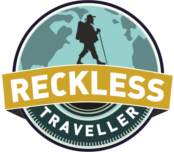
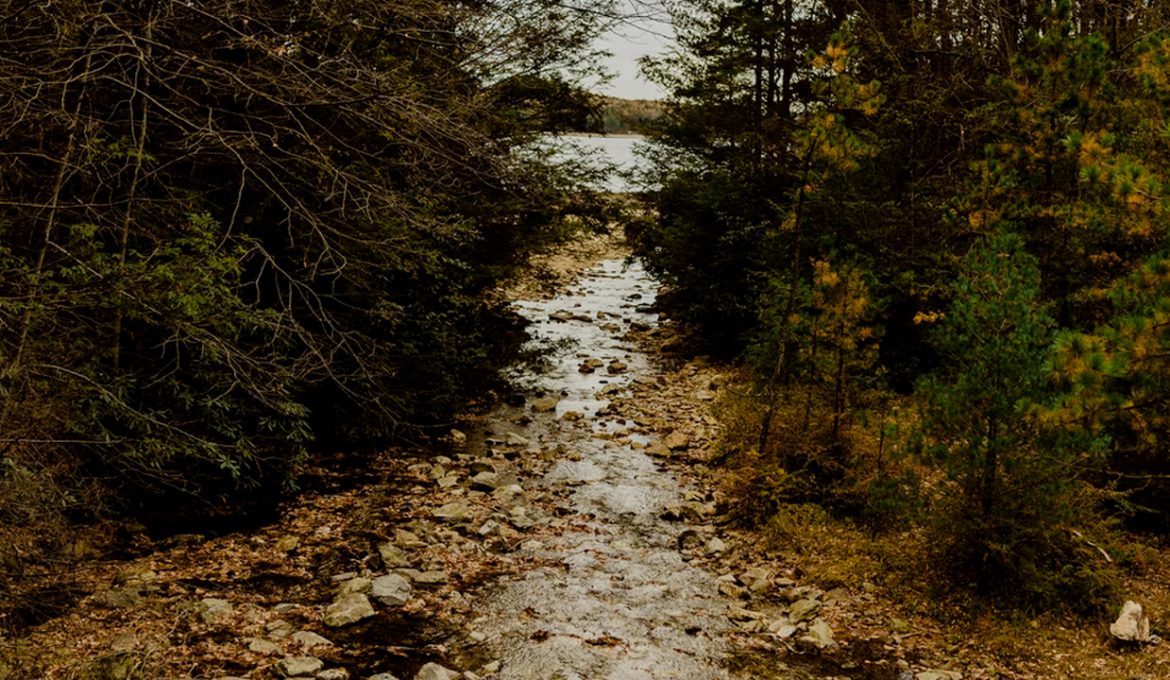


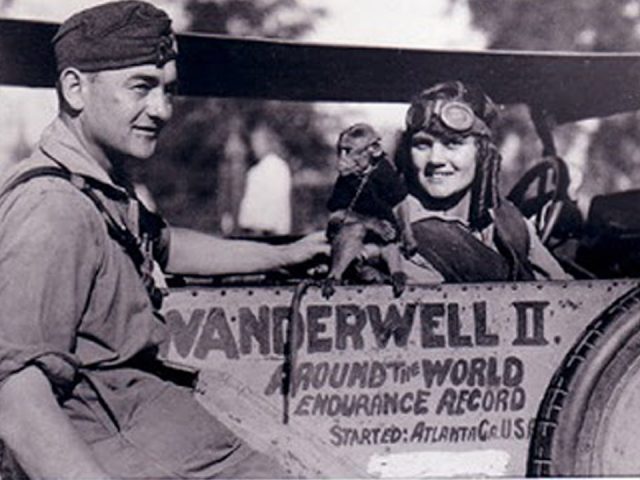
Facebook Comments